The saiga antelope, also known simply as the saiga, is an antelope species native to Russia and Kazakhstan. Hunting pushed these creatures to the brink of extinction, and they are currently listed as Critically Endangered by the IUCN Red List. Read on to learn about the saiga antelope.
Description of the Saiga Antelope
Saigas are quite interesting looking antelopes. Their bodies look relatively similar to most other antelope species, but their heads are quite the exception. They have two enlarged nostrils that point downward and connect to an oversized nose. This nose looks somewhat similar to that of an elephant seal. In males, the head is also topped by a pair of slightly translucent, ringed horns. Their fur ranges from red to yellow in color.
Interesting Facts About the Saiga Antelope
These highly endangered creatures are in great danger of extinction. Researchers believe their populations have declines as much as 95% in the past 15 years. These incredibly interesting and well-adapted antelopes deserve our protection.
- The Nose, Knows! – That strange looking muzzle is actually very useful! Dust storms can rage during the summer, and the saiga’s elongated snout prevents dirt and sand from getting into their lungs. In the frigid winters, the extended nose allows air to warm up before reaching the lungs.
- Long Migration – One of the most famous characteristics of these creatures, besides their Alf-like appearance, is their immense migration. Every November thousands of herds migrate south to avoid the harsh winter.
- Herd Life – Individual herds are made up of 30 or 40 antelope. Each herd has a male that guards a large harem of females. During migrations, herds can join up along migration routes creating superherds.
- A Day in the Life – During migrations these antelope can travel up to 72 miles in a single day! Though move along at a steady pace, but are capable of running up to 80 mph to escape predators.
Habitat of the Saiga Antelope
These antelopes live in semideserts, grasslands, open woodlands, and steppes. They avoid travelling through heavily forested areas, preferring to stay out in the open where they can spot predators and run unimpeded. Saigas will also avoid areas that are extremely rocky or steep terrain for the same reason.
Distribution of the Saiga Antelope
Historically, these animals were widespread across central Asia, from the British Isles to the Bering Strait. Unfortunately, their populations have become fragmented by area. A few separate populations occur in Kalmykia, Kazakhstan, Mongolia, and Russia.
Diet of the Saiga Antelope
The saiga’s diet consists mainly of plants. They will even eat plants that are poisonous to other animals. Because they do not eat other animals they are considered herbivores. They graze on low growing vegetation, and are known to eat over 100 different plant species. Some commonly eaten foods are saltworts, sage grass, lichens, cypress, and grass.
Saiga Antelope and Human Interaction
Humans have decimated saiga populations. In the past, these antelopes were hunted very heavily for meat, and also for their horns. The horns were used in Traditional Chinese Medicine, and even proposed as an alternative to rhino horns. Illegal hunting is still a major problem, and populations have suffered because of it. Natural illnesses have exacerbated this decline, and in some instances as many as one-third of the population has perished.
Domestication
Saigas have not been domesticated in any way.
Does the Saiga Antelope Make a Good Pet
These animals are Critically Endangered, it is illegal to own one as a pet because every animal is important to the gene pool.
Saiga Antelope Care
There are only a few zoos that currently have saigas, including the Moscow Zoo and the Askania-Nova Preserve, and they were once kept at the San Diego Zoo. Captive populations and breeding provide important insights into wild saiga behavior and conservation. Establishing a population of these antelopes in zoos can potentially prevent their extinction, as we saw with the California Condor and Black Footed Ferret.
Behavior of the Saiga Antelope
These mammals are quite social, and even when they are not migrating will form herds of 30 – 40 individuals. These herds are vigilant for predators and use their impressive speed to escape across the open grasslands and steppes. When the herds migrate for the winter they will come together along common migration routes in great numbers.
Reproduction of the Saiga Antelope
A single male will battle for control of a harem of female saigas. This male is the only one that will reproduce with the females. The female has a gestation period of 139 – 152 days, and commonly gives birth to twins. By their first week, calves are beginning to graze. The calves will be fully weaned by the time they are four months old.

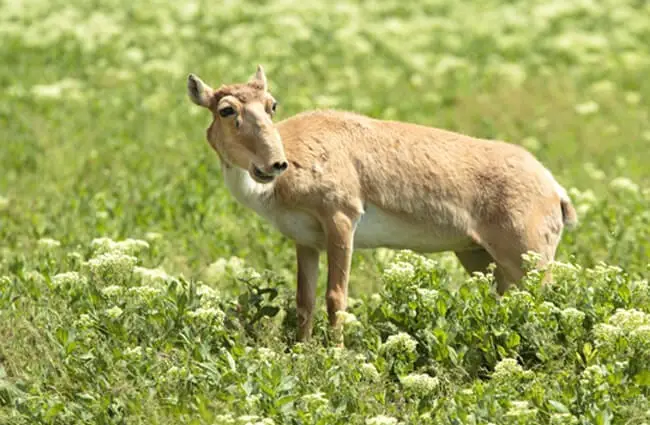
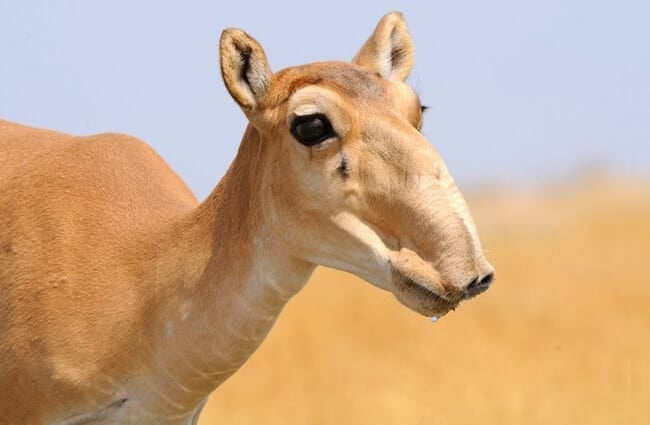

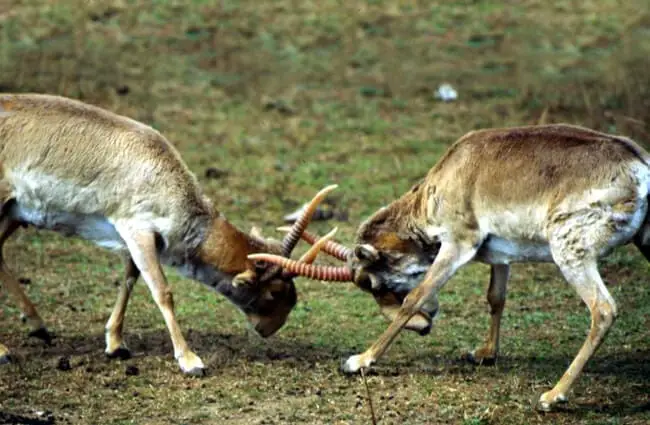



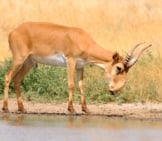

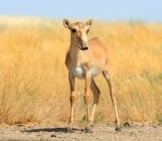
![Red Angus Closeup of a beautiful Red Angus cowPhoto by: U.S. Department of Agriculture [pubic domain]https://creativecommons.org/licenses/by/2.0/](https://animals.net/wp-content/uploads/2020/03/Red-Angus-4-238x178.jpg)












![Red Angus Closeup of a beautiful Red Angus cowPhoto by: U.S. Department of Agriculture [pubic domain]https://creativecommons.org/licenses/by/2.0/](https://animals.net/wp-content/uploads/2020/03/Red-Angus-4-100x75.jpg)

